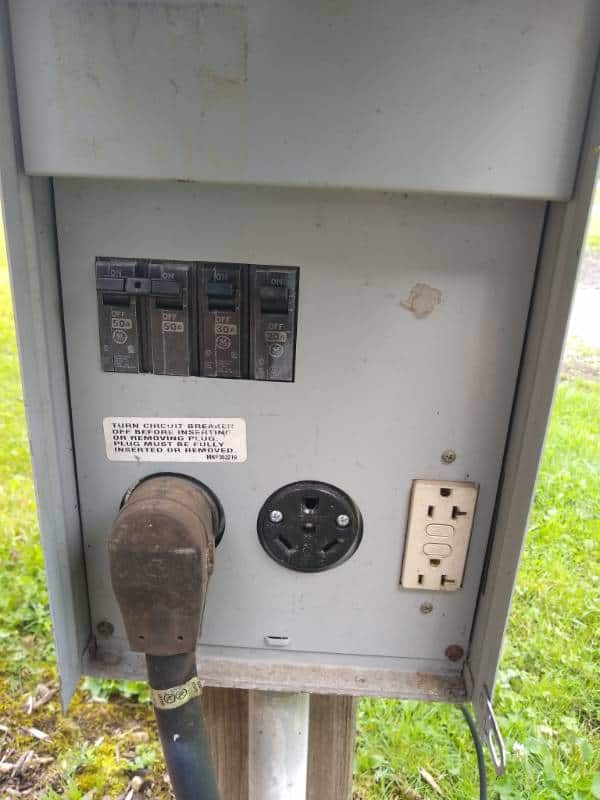Hello there! In my Questions From the Road column, I take a crack at answering real questions from real RVers, just like you. You might find your question here! If not, please send me an email!
Is is logical to think, without opening up a panel, that when you connect a 4-prong, 50-amp RV plug into a 30-amp RV plug adapter (if a camp ground doesn’t offer 50 amp hookup) that I would lose half of my 120-volt circuits?
Bill

Is it logical? Sure, you’d be forgiven for thinking that! But thankfully, no, that’s not how things work!
With the right adapter, you can plug your RV into most standard outlets. As I discussed in A Surprising Difference Between 50A and 30A Power and Can You Plug Your RV Into a Dryer Outlet, you can plug a 50A RV into a 30A hookup, a 20A hookup, or even a small 15A household outlet.
A 30-to-50-amp adapter will “fork” the single-phase 30A power into two faux “legs,” although both are in the same electrical phase. So both 120V legs in your RV should receive power.
Fair warning, though: Don’t MacGyver your own adapter! Many 30A RVs have been damaged by plugging into a 240V outlet.
All circuits will remain operational when you use an adapter. However, you will be limited in how much total power you can draw.
- A 50A hookup provides two 50-amp legs at 120-volts (240-volts total) for a total of 12,000 watts of power.
- A 30A hookup provides a single 30-amp leg at 120-volts for a total of 3,600 watts of power.
All circuits will still work; you just can’t use as much power as you’re used to!
In real-life terms, this normally means you can only run one large AC appliance at one time when plugged into 30A power. You generally can’t run two air conditioners, or an air conditioner plus a microwave, for instance.
.
Leave a Reply